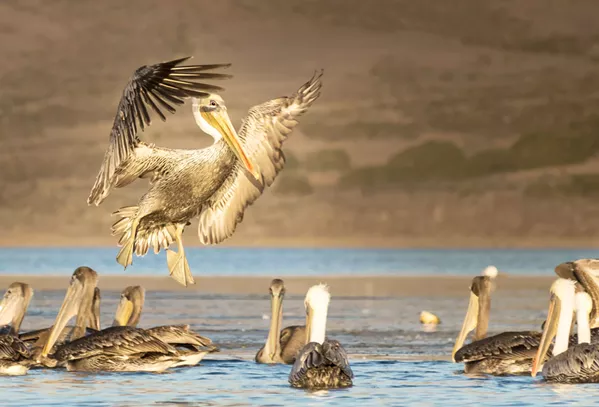The Kunga Was a Status Symbol Long Before the Thoroughbred
In historical Mesopotamia 4,500 a long time back, lengthy right before horses arrived in the area, yet another spirited member of the equine spouse and children, the kunga, took a starring position in pulling 4-wheeled wagons into fight.
Archaeologists had suspected that these animals — depicted in artwork, their product sales recorded in cuneiform creating, their bodies at times laid to relaxation in abundant burial sites — ended up the result of some variety of crossbreeding. But proof was lacking.
On Friday, a team of researchers reported on more than a 10 years of research in the journal Science Improvements, concluding that studies of historic DNA confirmed the kunga was a cross among a female donkey (Equus Africanus asinus) and a male Syrian wild ass (Equus hemionus hemippus).
The kunga is the first identified instance of a human-engineered hybrid of two species, a production considerably outside of the conventional processes of the domestication of animals, the researchers identified.
Eva-Maria Geigl, a expert in ancient genomes at the University of Paris, and one of the scientists who did the examine, said the breeding of kungas was actually “early bioengineering” that formulated into a variety of historical biotech market.
Like mules, which are hybrids among horses and donkeys, and which were being produced considerably afterwards, the kungas were being sterile. Every single new kunga was a 1-off, a mating involving a wild ass stallion and a donkey.
The stallions had to be captured and retained in captivity, even even though they had been highly intense, as modern-day records have indicated. Dr. Geigl said that the director of a zoo in Austria, wherever the final captive Syrian wild asses died, explained them as “furious.” Archaeological records display that a breeding middle in Nagar (now Notify Brak, Syria) transported the youthful kungas to other metropolitan areas. They ended up pricey animals, standing symbols, and ended up made use of in war and military services ceremonies.
Kungas held their significant status for at least 500 years, Dr. Geigl said. Horses did not appear until finally all around 4,000 yrs ago to take their place in struggle and ceremony, and to lead to the generation of other hybrids. Ahead of the existing analysis, the oldest recognised hybrid was a mule from a web page in Turkey courting to 3,000 years in the past. Members of the exact same workforce reported on that locate in 2020.
The investigation workforce had to cope with the extremely poor preservation of fossils from desert places, but applied a variety of tactics to analyze ancient DNA. Laurent Frantz, a paleogenomics skilled at Ludwig Maximilian University of Munich, who was not associated in the analyze, said that in spite of these problems, the “results were being quite convincing,” demonstrating that people “were experimenting with hybrid equids extended before the arrival of the horse.”
Fiona Marshall, an archaeologist at Washington College in St. Louis, who has researched the prehistory of donkeys and their domestication, mentioned the analyze was “enormously significant” partly for the reason that it showed that the breeders had crystal clear intentions. The early process of domestication was constantly murky — in all probability part incident, portion human intervention — but this investigation confirmed what the historic Syrians were after.
“People preferred the traits of a wild animal,” she stated. Donkeys may possibly have been tamer than their ancestors, the African wild ass, but the breeders in Mesopotamia needed to back breed to other wild asses for energy and speed — and possibly size. Despite the fact that the last regarded residing examples of the Syrian wild ass were being extremely small, a minor extra than 3 ft at the withers, older animals of the exact species were being much larger.
Dr. Geigl — who collaborated on the investigation with Thierry Grange at the University of Paris, E. Andrew Bennett, now with the Institute of Vertebrate Paleontology and Paleoanthropology in Beijing, Jill Weber at the College of Pennsylvania Museum of Archaeology and Anthropology and other people — reported that the crew sequenced DNA from various sources, like fashionable donkeys, horses and quite a few species of wild asses, and museum samples.
Of distinct importance have been the bones of 44 kungas interred at a rich burial web page in Syria termed Umm el-Marra. Those people skeletons had before led Dr. Weber and other folks to hypothesize that they were hybrids and that they had been the kungas explained in tablets and represented in artwork.
Their enamel confirmed little bit marks and indicated they had been fed a unique food plan. The new research utilized DNA from people kungas to review to other species and figure out that these animals ended up, as suspected, the final result of breeding feminine donkeys and male Syrian wild asses.
The study workforce also sequenced DNA from a Syrian wild ass found at Gobekli Tepe in Turkey, an 11,000-calendar year-aged web-site in which people collected for reasons still remaining researched, and from two of the very last animals of the species, held at a zoo in Vienna.
It is a species that no longer exists. The kunga just can’t be recreated, Dr. Bennett mentioned. Donkeys are plentiful, of training course, but the past identified Syrian wild asses died in the late 1920s. A single was shot in the wild and the other died in a zoo in Vienna.
“The recipe for producing the kunga was mysterious for thousands of years,” Dr. Bennett mentioned. “And we lastly decode it not even 100 yrs due to the fact 1 component has turn out to be extinct.”



